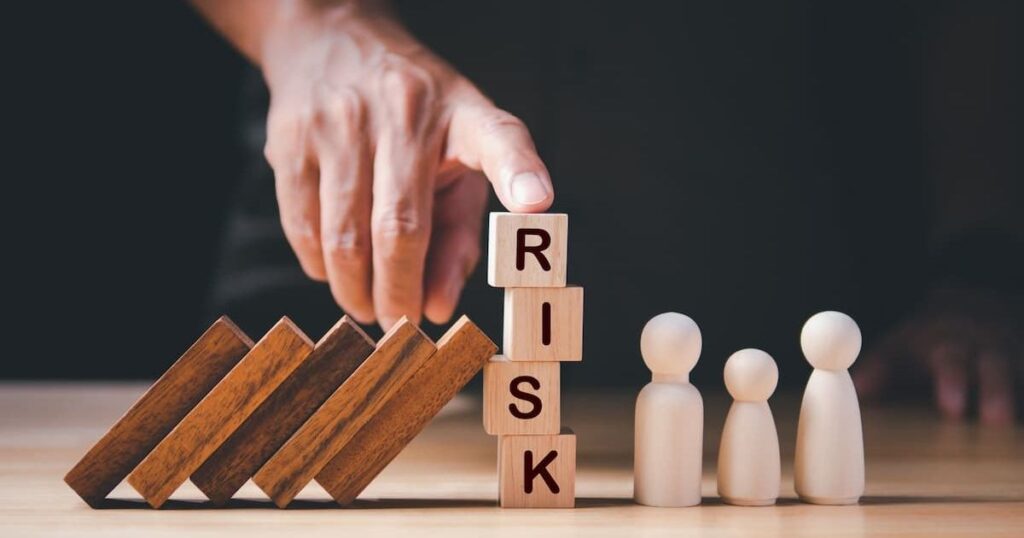Risk prevention refers to the structured effort organizations make to identify, assess, and manage potential threats before they materialize.
A strong strategy helps teams anticipate challenges and maintain operational stability in a world filled with volatility, uncertainty, complexity and ambiguity.
A clear outline of key ideas will help explain how organizations can build stronger protection, embed risk awareness in everyday work and position themselves for long-term resilience.
Core Components of a Risk Prevention Strategy

Effective risk prevention begins with identifying possible threats that may influence performance, safety or continuity.
A combination of tools, such as SWOT analysis, historical trend evaluation, structured brainstorming sessions, and expert consultations helps leaders capture a wide set of potential risks.
Both qualitative and quantitative methods play important roles in this process.
Qualitative approaches capture human experience, while quantitative tools such as Monte Carlo simulations measure probability and impact in numerical ways.
A clear grasp of internal conditions and external pressures gives organizations a full view of their risk environment.
Internal factors may include staff capacity or outdated systems, while external sources may include regulatory shifts, market instability or geopolitical tensions.
Risk Response Strategies
Organizations must decide how to respond once risks are identified. Four major response types shape this decision-making process.
Avoidance removes the threat completely by discontinuing an activity or changing plans.
Mitigation reduces either the probability or the impact of a risk through targeted controls. Transfer shifts responsibility to another party through insurance or contractual arrangements.
Acceptance acknowledges that the risk is tolerable within the organization’s level of comfort.
Manufacturing companies may focus on safety hazards. Financial institutions may prioritize fraud or credit risks. Healthcare organizations may emphasize patient safety events.
Monitoring and Continuous Review
Ongoing monitoring ensures that risk strategies remain effective as circumstances change.
Real-time analytics, dashboards and automated alerts help teams detect shifts early and act quickly. Regular policy reviews keep controls aligned with updated regulations, new technologies and changing operating conditions.
Feedback loops create a cycle of continuous improvement by allowing staff to report concerns, system gaps and operational inefficiencies.
A dynamic review structure strengthens decision-making by ensuring risks are tracked, measured and adjusted as conditions evolve.
Embedding Risk Management in Organizational Culture

A risk management program gains power only when employees embrace it as part of daily behavior. Organizational culture must encourage vigilance, honesty and accountability.
Staff should feel safe raising concerns, reporting unsafe behavior and asking questions.
A shared responsibility mindset ensures that risk prevention does not fall on a single department. Cultural resistance may arise when teams view risk processes as extra bureaucracy.
Leaders can address this hesitation by demonstrating the practical benefits of proactive behavior and by rewarding those who detect issues early.
Clear expectations and open communication encourage a shift toward collective responsibility.
Role of Communication and Training
Effective communication ensures that complex risk concepts are expressed in simple terms that employees can easily relate to.
Tailored training programs help staff understand their specific responsibilities and expected actions in various scenarios.
Operational workers may require hands-on safety instruction, while managers may need advanced training on data-driven risk decisions.
Leaders must model risk-aware behavior through consistent action and transparent reporting.
When leaders demonstrate commitment, employees are more likely to integrate risk prevention into their own decision-making. Structured workshops, scenario-based learning, and continuous coaching strengthen long-term adoption.
For organizations in Sweden seeking accessible and structured workplace safety training, digital bamutbildning such as Kompetensutveckla’s BAM course offers a practical solution. It equips managers, safety representatives, and employees with essential knowledge in risk identification, legal responsibilities, and proactive prevention strategies.
Benefits of a Clear Risk Prevention Strategy

A strong risk prevention strategy helps leaders make informed choices by providing better insight into upcoming challenges.
Better decisions lead to more effective use of resources and improved financial stability.
Asset protection increases confidence among customers, investors and partners. Organizations gain the ability to withstand disruptions with fewer losses and faster recovery times.
Reputational strength grows when stakeholders see that the organization prioritizes preparation, transparency, and responsibility.
A disciplined approach to prevention helps teams respond quickly when unexpected events arise. Overall resilience improves as the organization becomes more adaptive, forward looking and confident in its processes.
The Bottom Line
A clear and adaptive strategy for risk prevention is essential for lasting organizational success.
Strong structure, open communication, and consistent cultural support drive meaningful progress.
Commitment to review, improvement, and accountability enables organizations to stay prepared in a constantly shifting environment.

